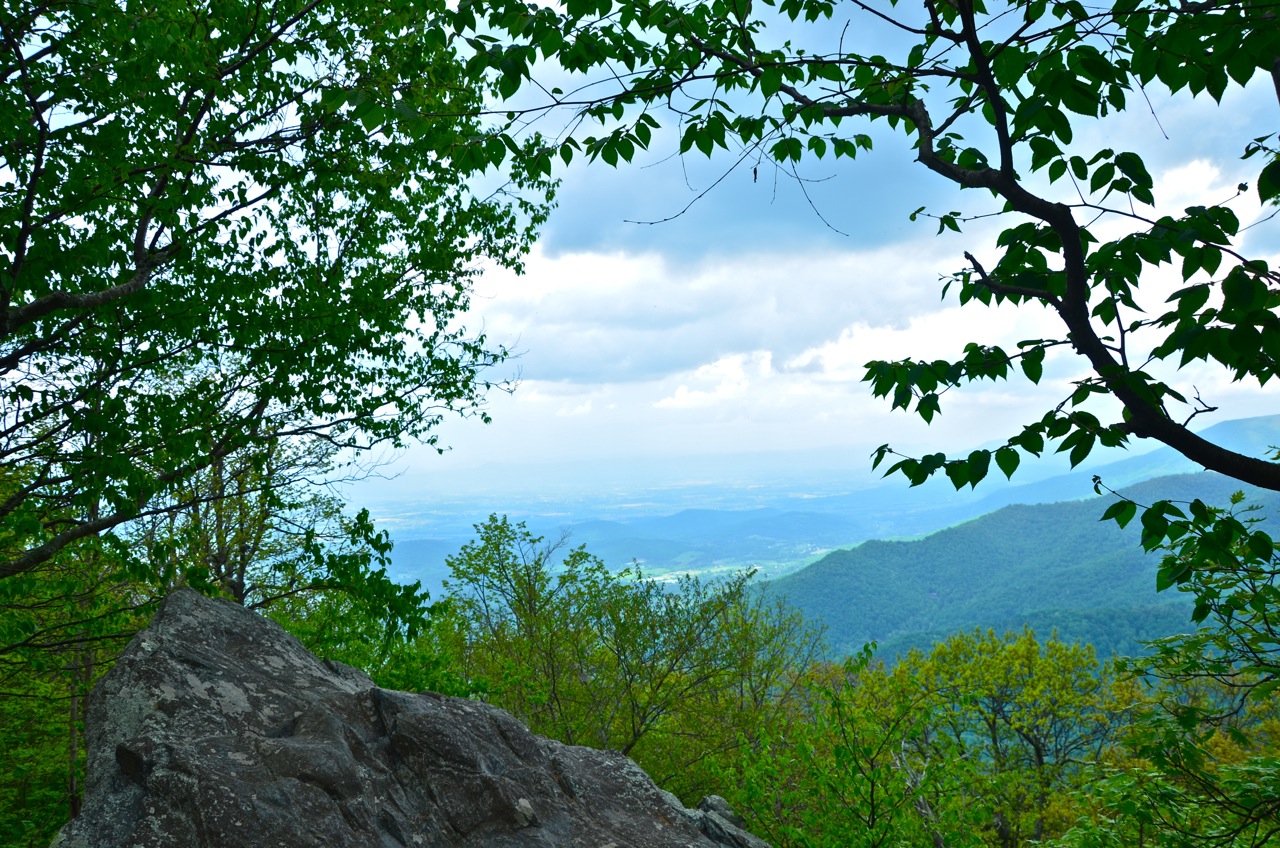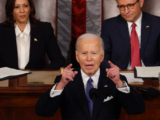
A view of the mountains from the Appalachian Trail by the Big Meadows Campground in Shenandoah National Park: Glynn Wilson
By Glynn Wilson –
WASHINGTON, D.C. – After spending much of the spring and summer in Shenandoah National Park, I pulled into the nation’s capital on Thursday and camped in a friend’s driveway near the Potomac River for the night — only to wake up Friday morning and see a misleading ad campaign on NBC’s “Today Show” featuring the national parks in a bad light.
In a concerted effort to have its clients avoid coming into compliance with the Obama administration’s proposed new EPA regulations on air polluting ozone, the lobbying outfit is trying to muddy the waters of public opinion by polluting the airwaves with a false and misleading ad campaign.
“New ozone regulations being proposed by the Environmental Protection Agency (EPA) are so restrictive, even some of our country’s most iconic National Parks will be considered non-compliant, or in non attainment,” according to the National Manufacturers Association. “Out of compliance on ozone means less development, fewer jobs and the potential for significant and long-term damage to our economy. If these pristine national treasures can’t meet the new standard, how can any community be expected to comply?”
The truth is that current ozone levels are down nearly 20 percent over the last decade, and the current standard that was set in 2008 has not been fully implemented, the lobbying outfit claims. “But now the Administration wants to throw that one out and reset the targets – before many states have even had a chance to comply with it.”
Watch the misleading video.
What Does The Elk Say?
The National Park Service actively monitors ozone at its parks from April to October, and the ozone measurements are compared with the National Ambient Air Quality Standard for ozone. The EPA sets this standard as the level at which the ozone in the air becomes unhealthy.
The proposed new standards would make the regulations tougher, although the administration has bent over backwards, to the consternation of many environmental groups, to seek input from the business community and give power plants and other polluting industries time to comply.
“I have no idea if the ozone standards are a good or bad idea, but this is a fairly deceptive ad campaign,” according to Justin Harding, who commented on the YouTube video.
You can see the National Park Service compliance reports at this link.
“As you can see,” Harding said, “very few parks are exceeding any standards, and neither Grand Canyon nor Zion (the parks featured by name in the above video) have exceeded the standards in 2015.”
If you look at the parks which do sometimes exceed standards, Sequoia/Kings Canyon and Joshua Tree stand out.
“A quick glance at a map reveals why they might stand out – they are east of California’s major municipalities,” Harding said. “If you want to convince people of something, and not just advocate, a deceptive shock campaign probably isn’t the best plan.”
According to Frank O’Donnell with Clean Air Watch in Washington, the National Association of Manufacturers is “literally manufacturing every conceivable argument it can crank out in an effort to block new ozone standards that would better protect our health and the environment.”
“In this case,” he said, “the polluter lobby would have us believe that national parks are so polluted by ‘nature’ — or perhaps by Satan? — that it is impossible for them to meet better ozone standards?”
That, of course, is “obvious nonsense,” he said, “as has been demonstrated by groups such as the National Parks Conservation Association,” which recently issued a report on the subject.
Pollution in the parks comes from the extraction and burning of fossil fuels — coal, oil and gas.
“If EPA follows through with a proposal and sets tougher ozone standards,” O’Donnell said, “not only would we live longer and breathe easier, but the air in our national parks would be clearer and cleaner.”













